
This evening I started to remove the master cylinder from the Series Land Rover.
Removal of this was pretty straightforward, just remove these 6 bolts from in the footwell. This is all that holds the pedal box in, then with a little leverage from the pinchbar to break the gasket loose and then it's just spin the assembly around 60 times one way, 46 back the other, then 83 times back again. Then lift it up past the fluid reservoir.
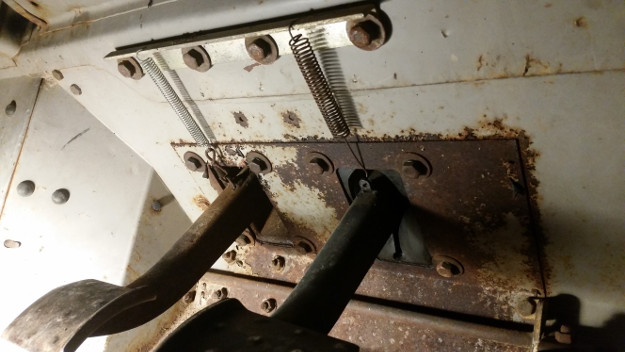
It was night and my hands were covered in brake fluid so I didn't get any photos from the top. But here is the assembly on the workbench.
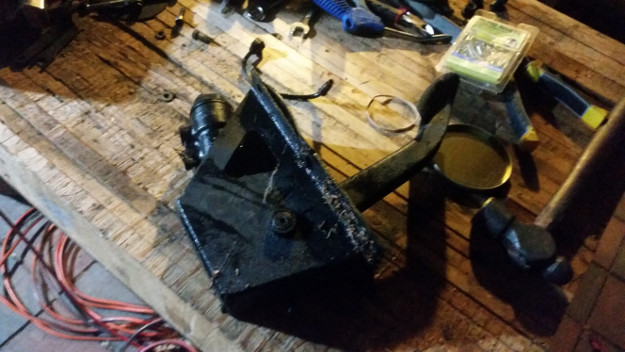
A bit grubby on the outside. That I can live with. I'll put the pedalbox through the parts washer to make it a bit neater before re-assembly.
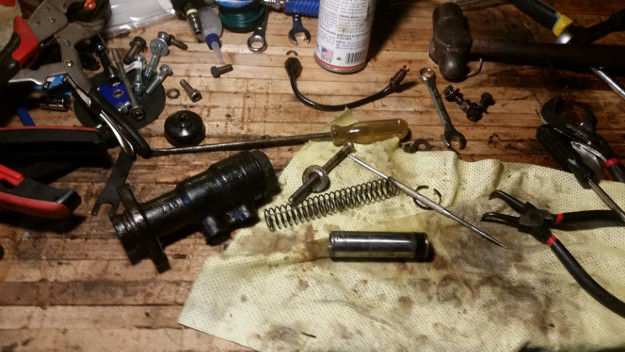
There isn't much inside one of these things. I'm quite confident this has been a problem. There is a very definite grittyness and hardness on the rubber(?) seal on the piston. So I think that putting the new MC will improve (hopefully fully fix) the problems I've had with my brakes.
In this job there was one tool that I found most important.
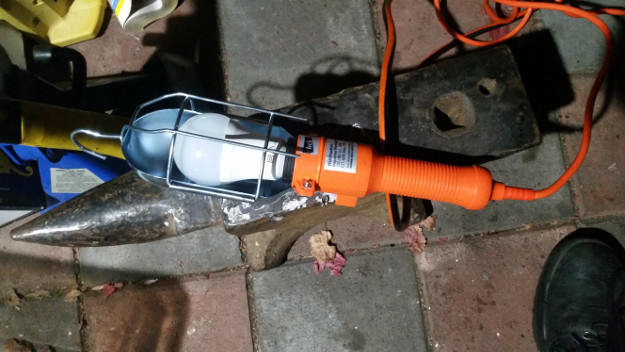
I was in Bunnings earlier and almost walked past this. $9 for the holder add a little more for the bulb and all of a sudden it is easy for me to get work done once the sun has gone down. I have put a LED bulb because I won't burn myself on it, I can put a brighter bulb in it and I don't need to worry about breaking a hot filament through rough handling.
In the next few days I'll be putting the new one back in so stay tuned for that.
Cheers,
Rex
- Details
- Written by Rex ORegan
Who can recognise this? Any why would I be putting this in my Series Land Rover?
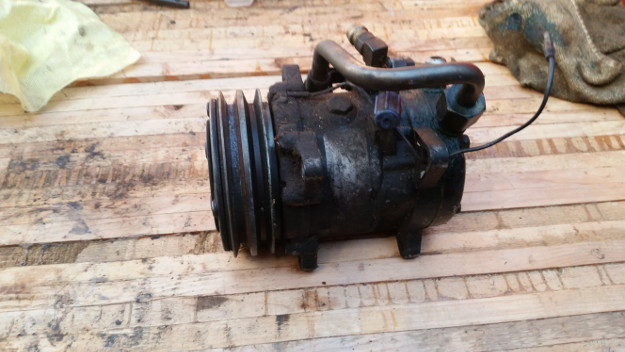
For those who don't spend their spare time getting to know all of the parts in your engine bay by name; this is the compressor from an automotive air conditioner. Now why would I be wanting to put this in the Land Rover? I mean there's no point trying to cool it down, Series Land Rovers are notorious for having lots of air leaks. This one doesn't even have windows yet for goodness sakes.
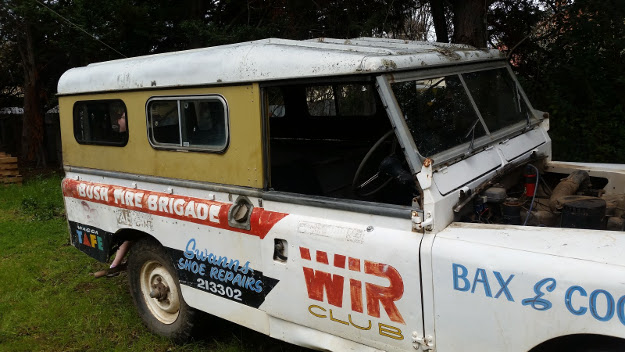
- Details
- Written by Rex ORegan
Read more: You're putting what in the land rover?
Write comment (1 Comment)This weekend I got some good progress on the Land Rover. One of the things I've worked out that has been hanging over my head is the brakes. I've reassembled the brakes on the front axle enough to test for leaks in the system.
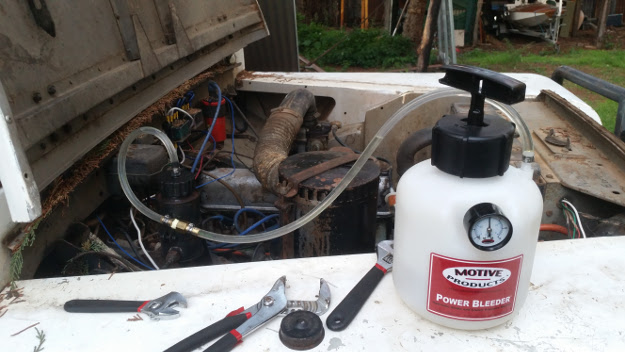
This was my setup. A pressure bleeder with the brake fluid I had left in it, pumped up to 14-15psi as per the owners manual. However the pressure would bleed down slowly. Maybe 1psi every couple of minutes. With no leaks between the pressure vessel and the master cylinder it had to be leaking somewhere else.

Turns out this is where it was coming out. It seems to be coming down the link for the pedal then dripping from the linkage onto the floorpan. Looks like I'll need a new MC. I'd been hoping that I wouldn't have to replace this as it is very awkward to get to and all of the screws seems to be plain steel and locked in tight by rust. At least I will have some time to read up on how to remove the MC and soak the bolts before the new one arrives.
Keep an eye out for another post soon with the other stuff I've been working on over the last weekend soon.
Cheers,
REx
- Details
- Written by Rex ORegan
I guess I shouldn't really be too surprised, but I've found another leak on the Land Rover. This time in the transfer case which could explain why it is so noisy when spinning. Although that could also be just the way these cars were made. It does definitely explain why the handbrake doesn't work though.
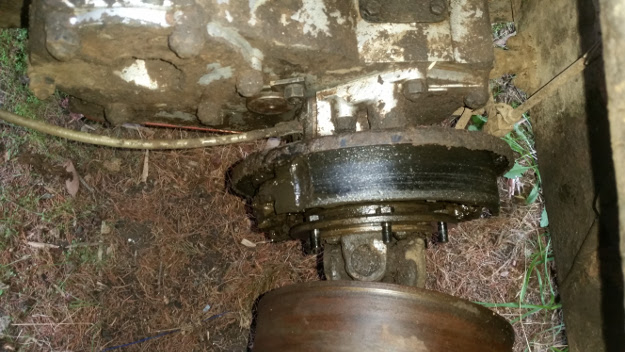
- Details
- Written by Rex ORegan
Read more: More leaks on the Land Rover
Write comment (0 Comments)Page 4 of 46

